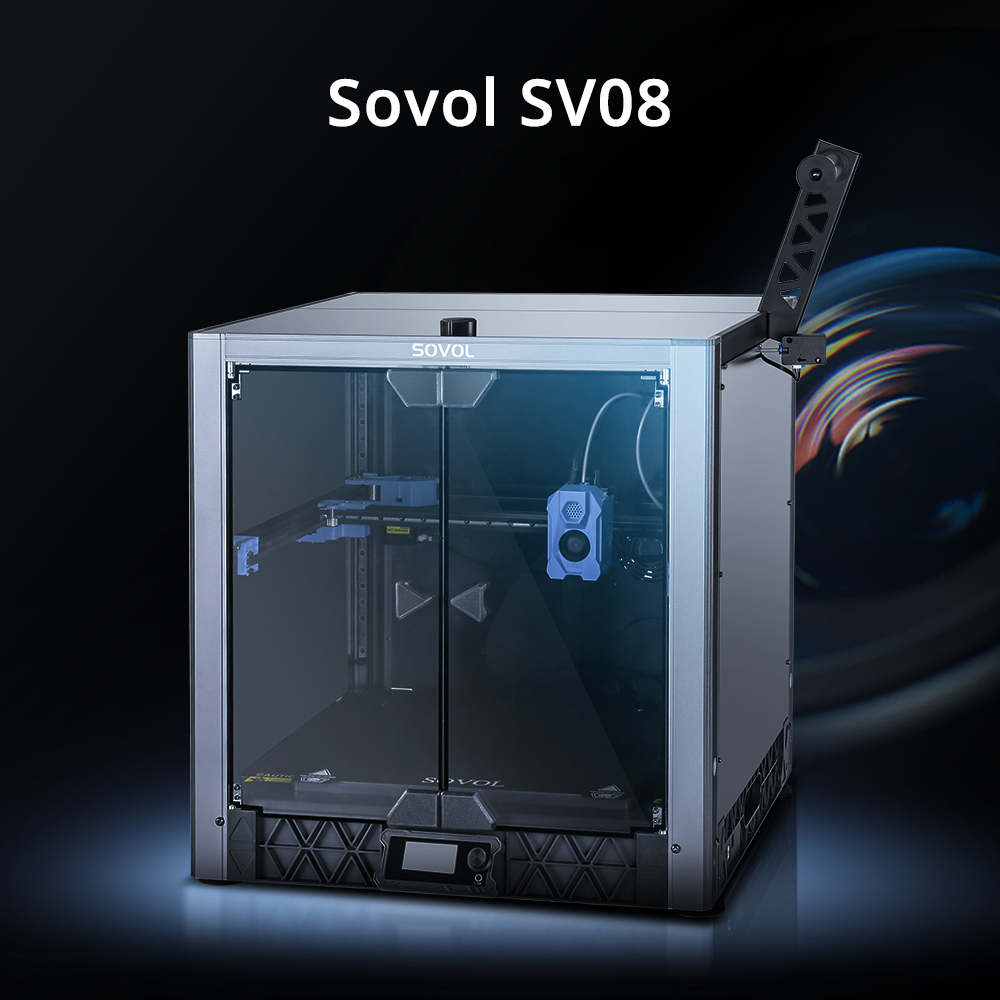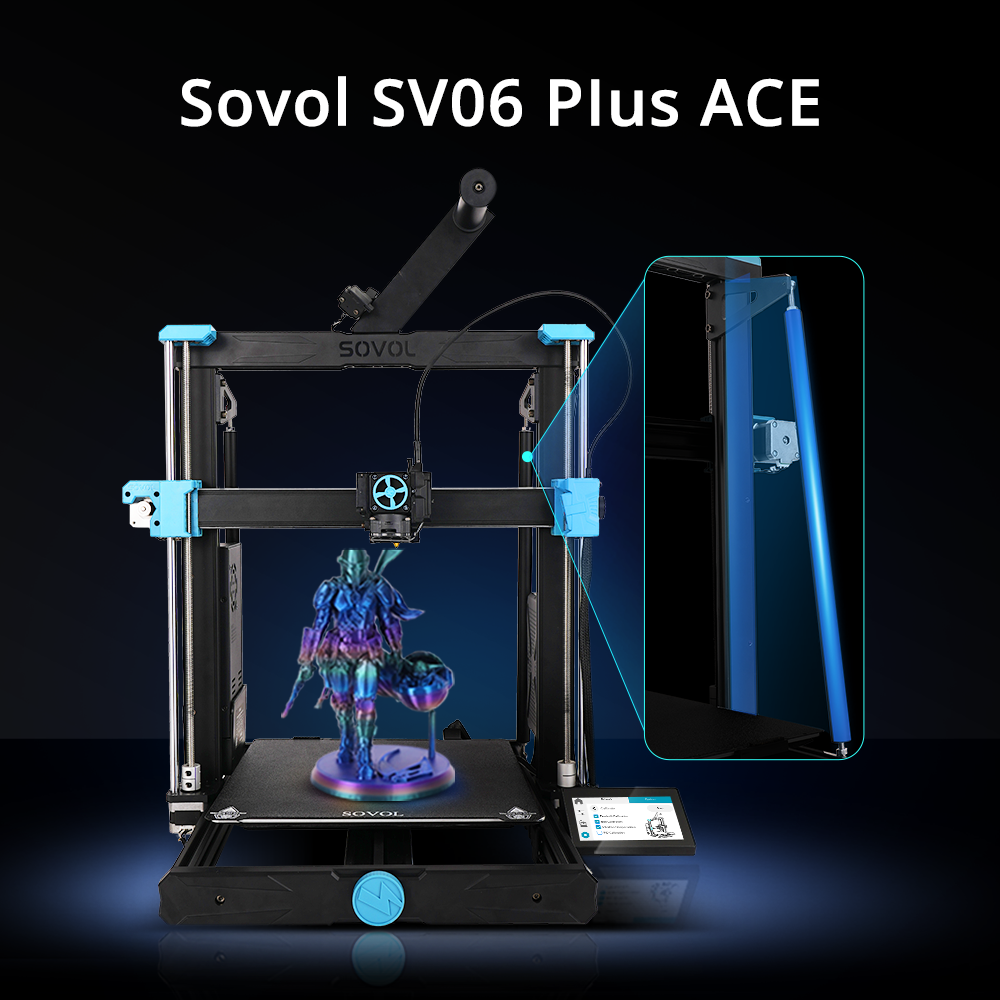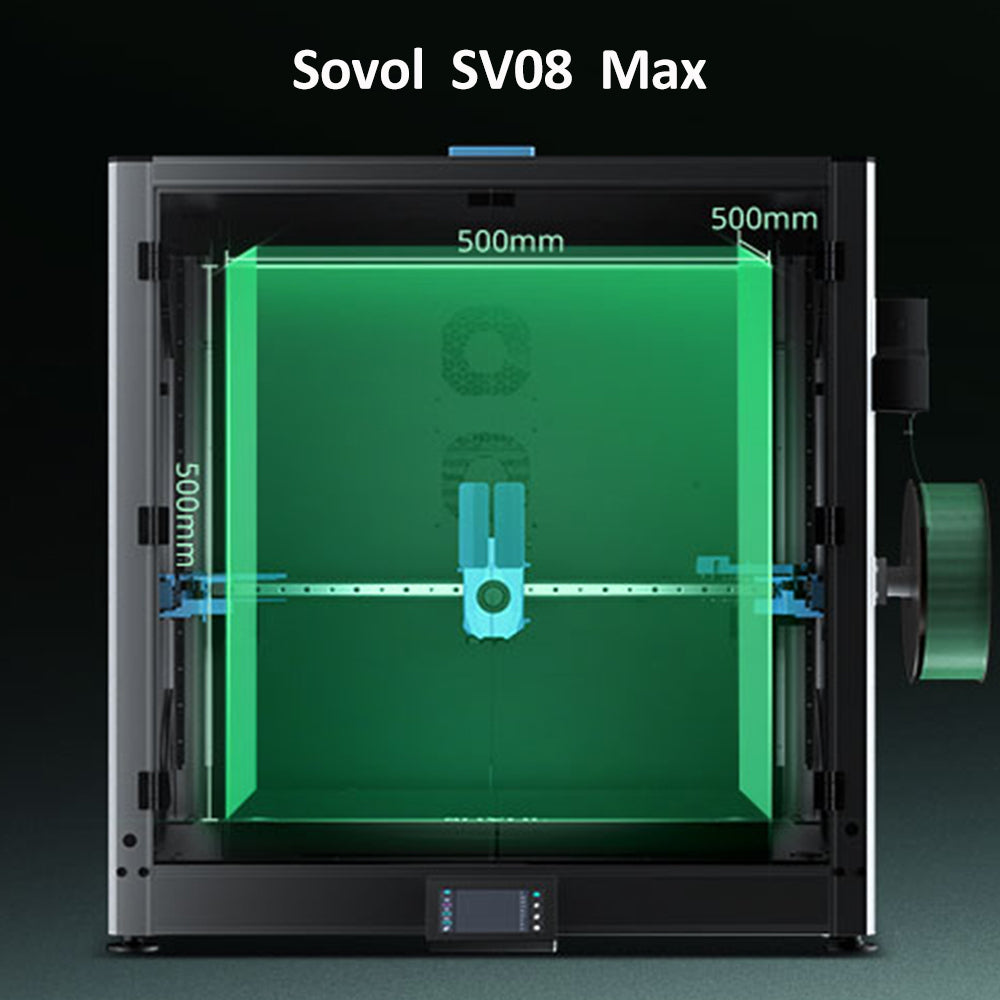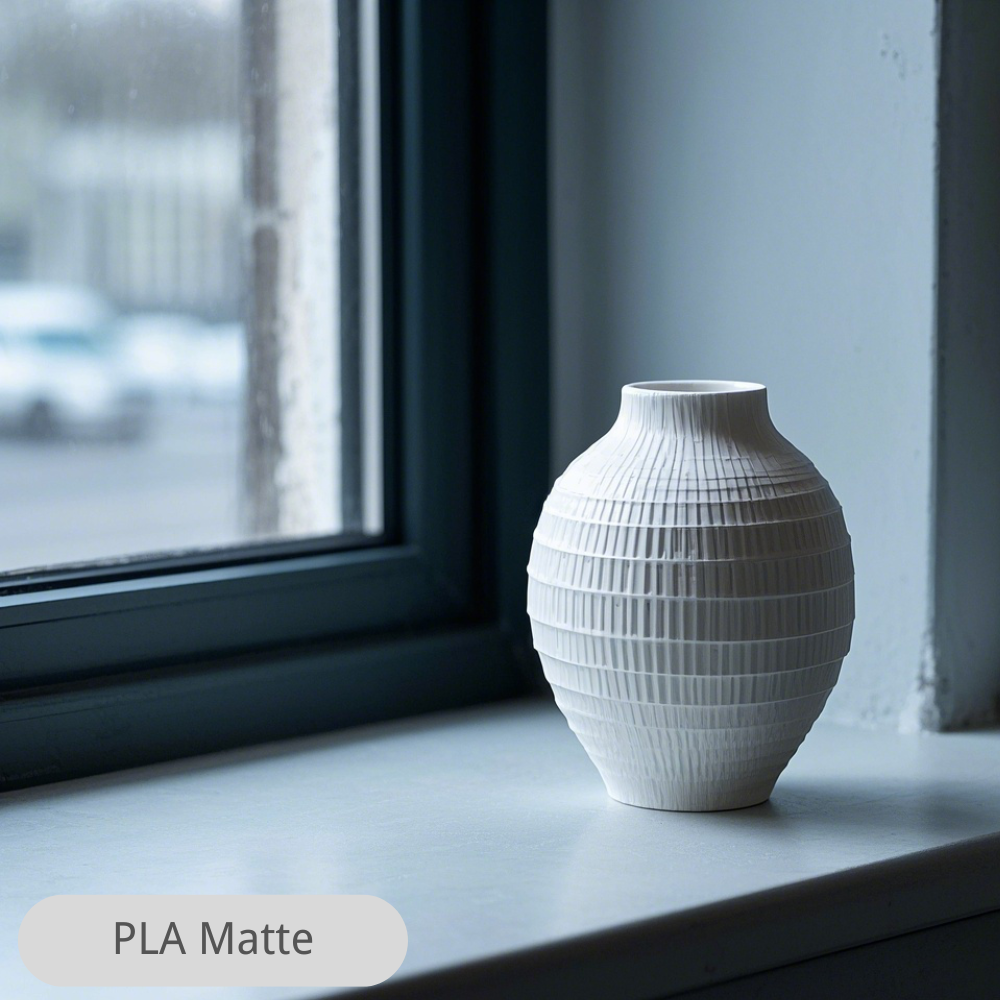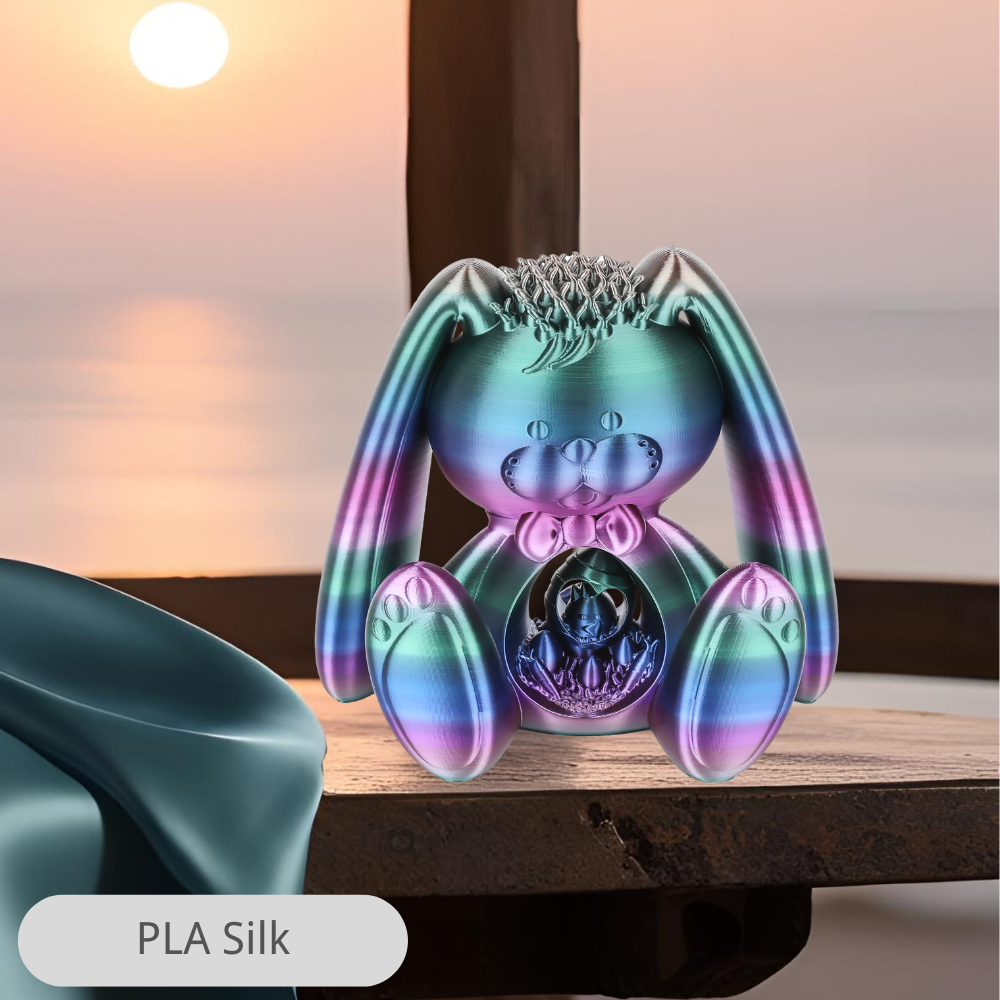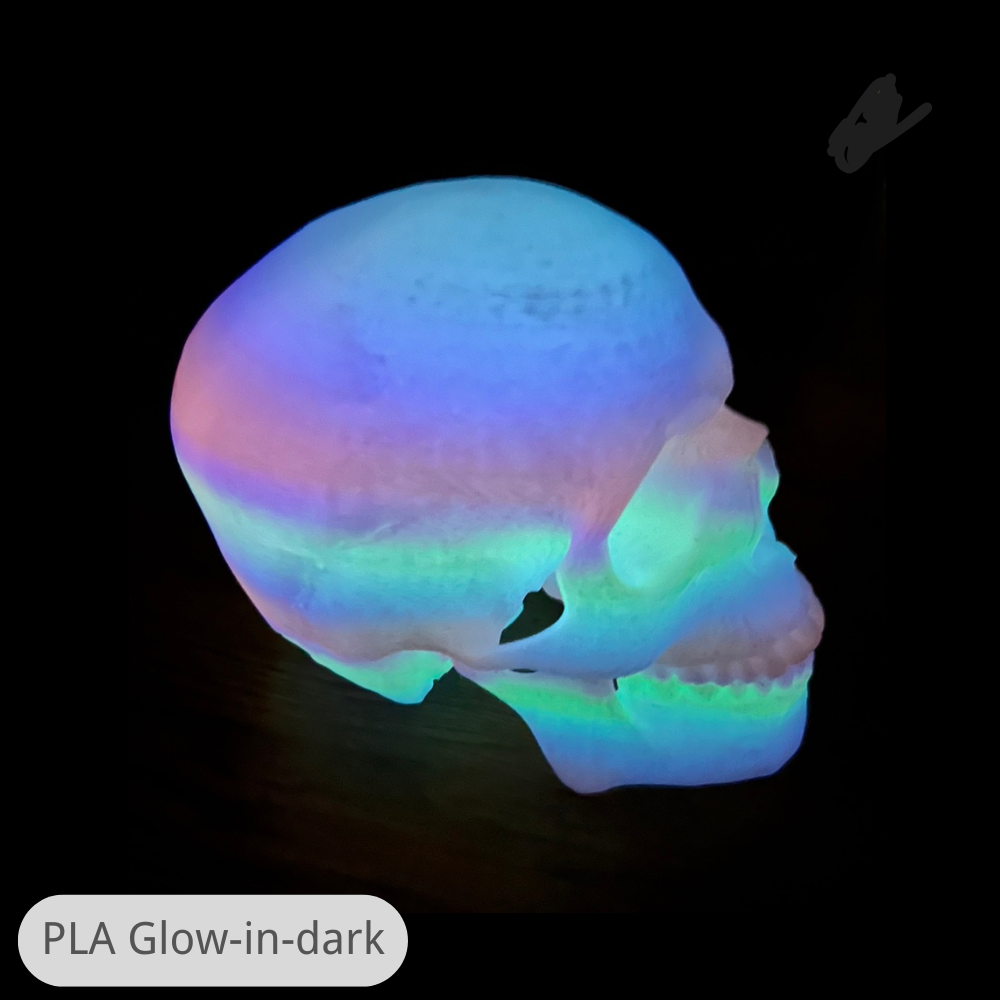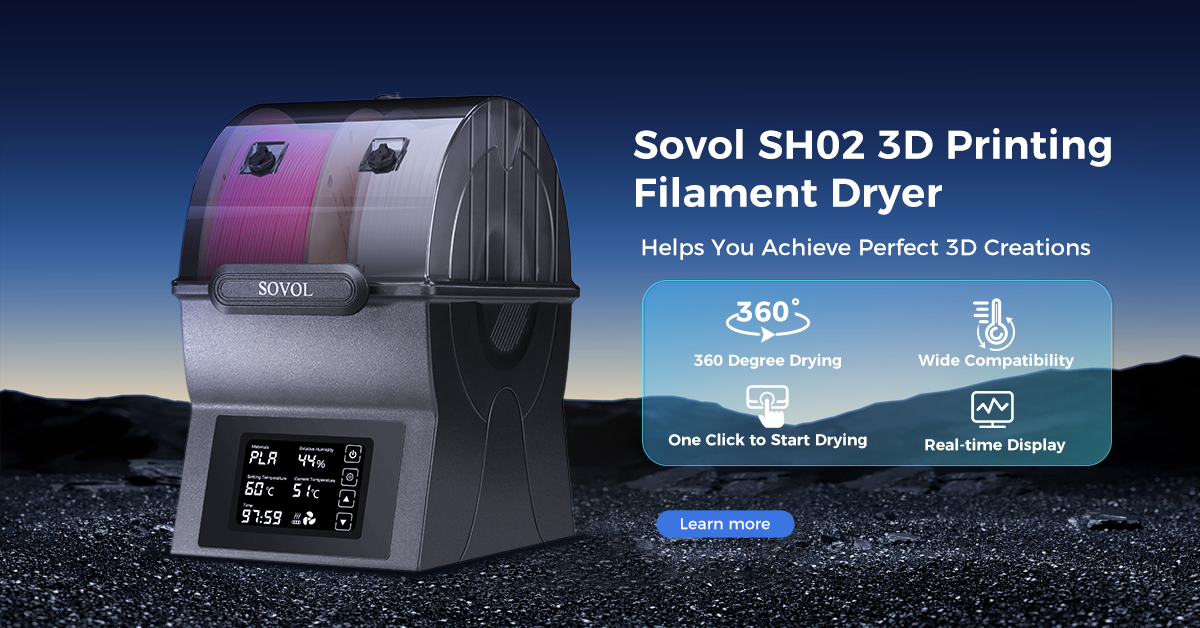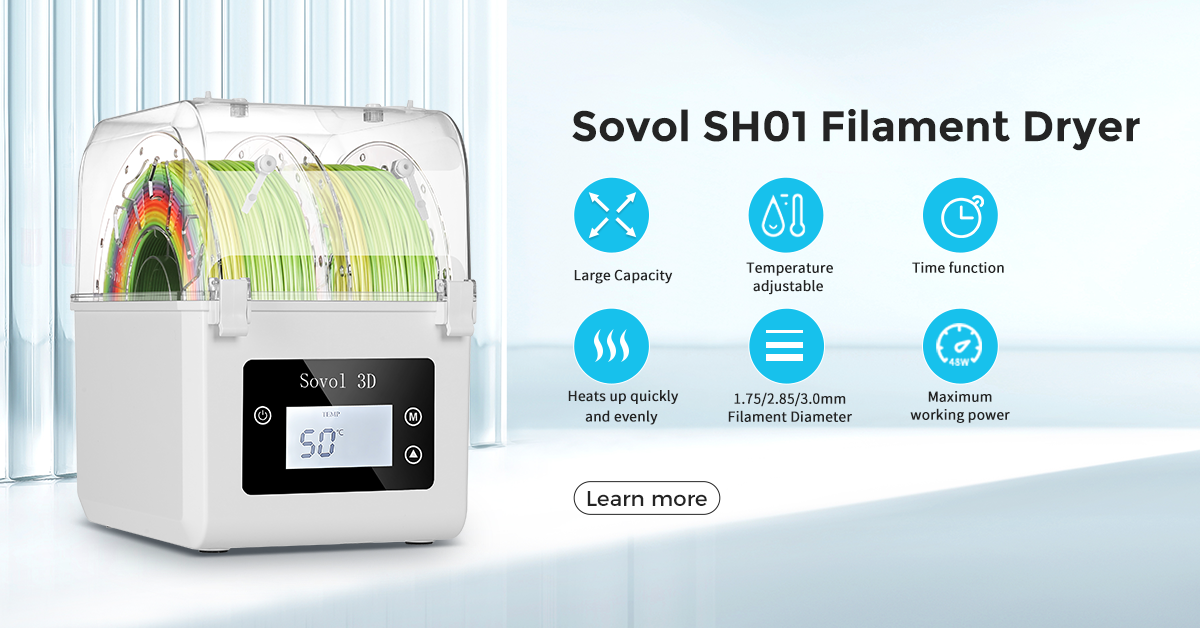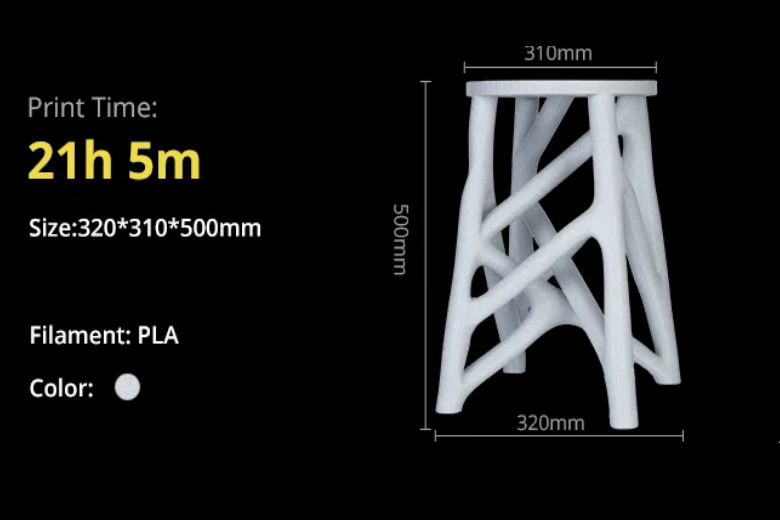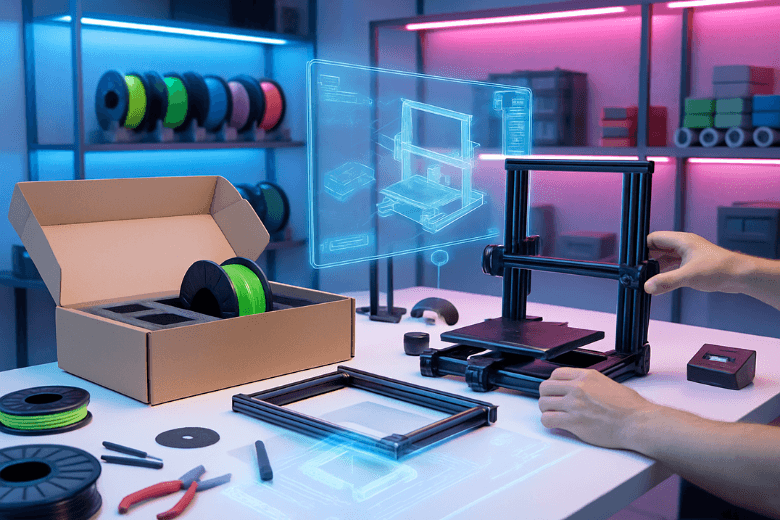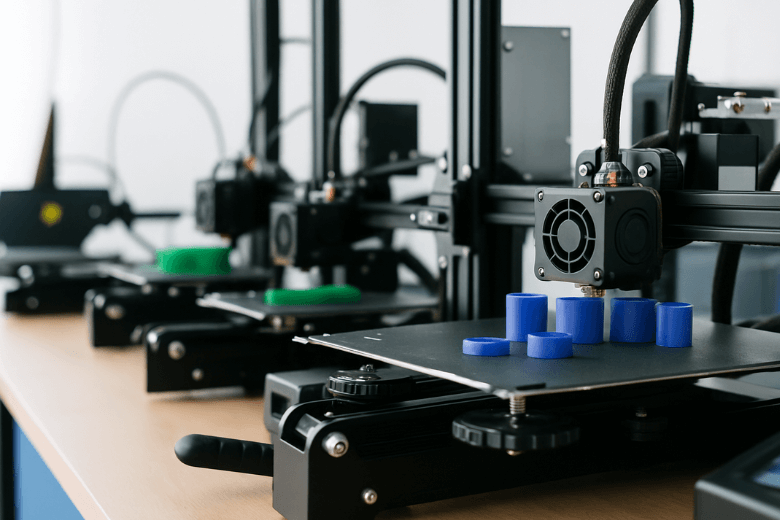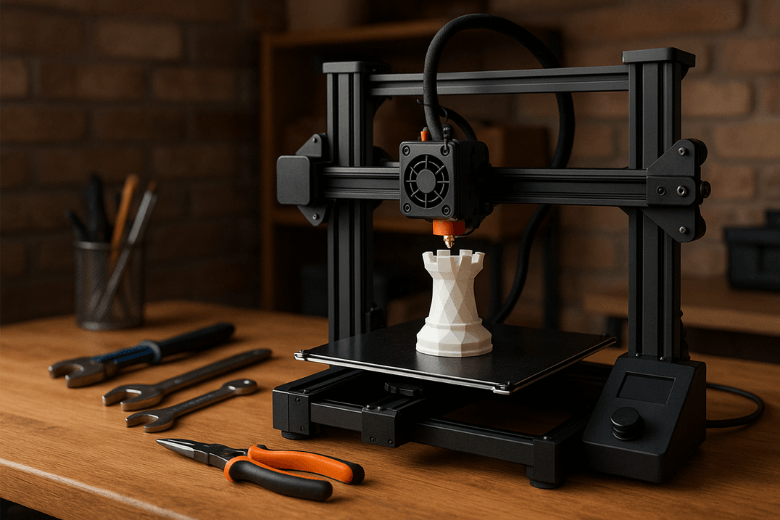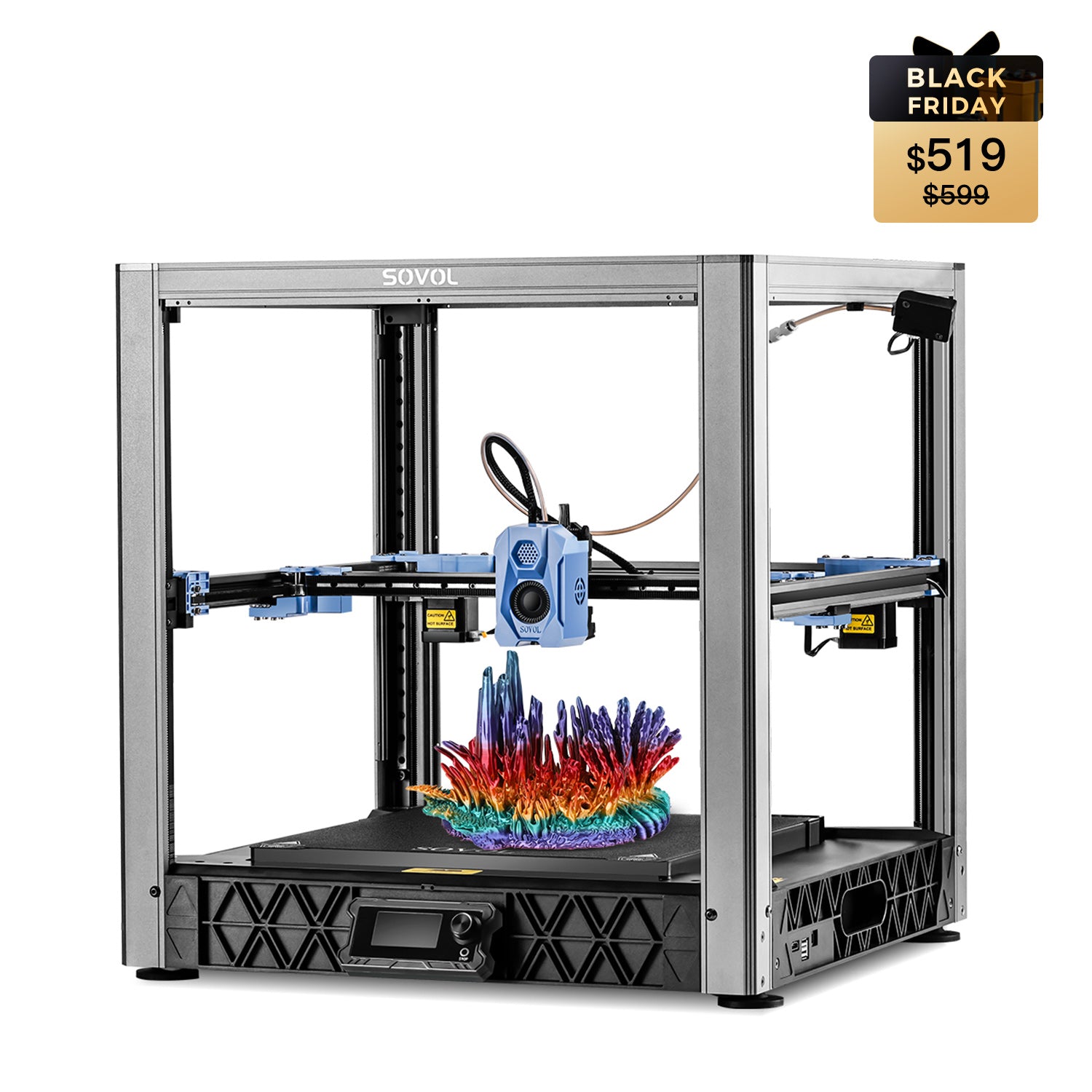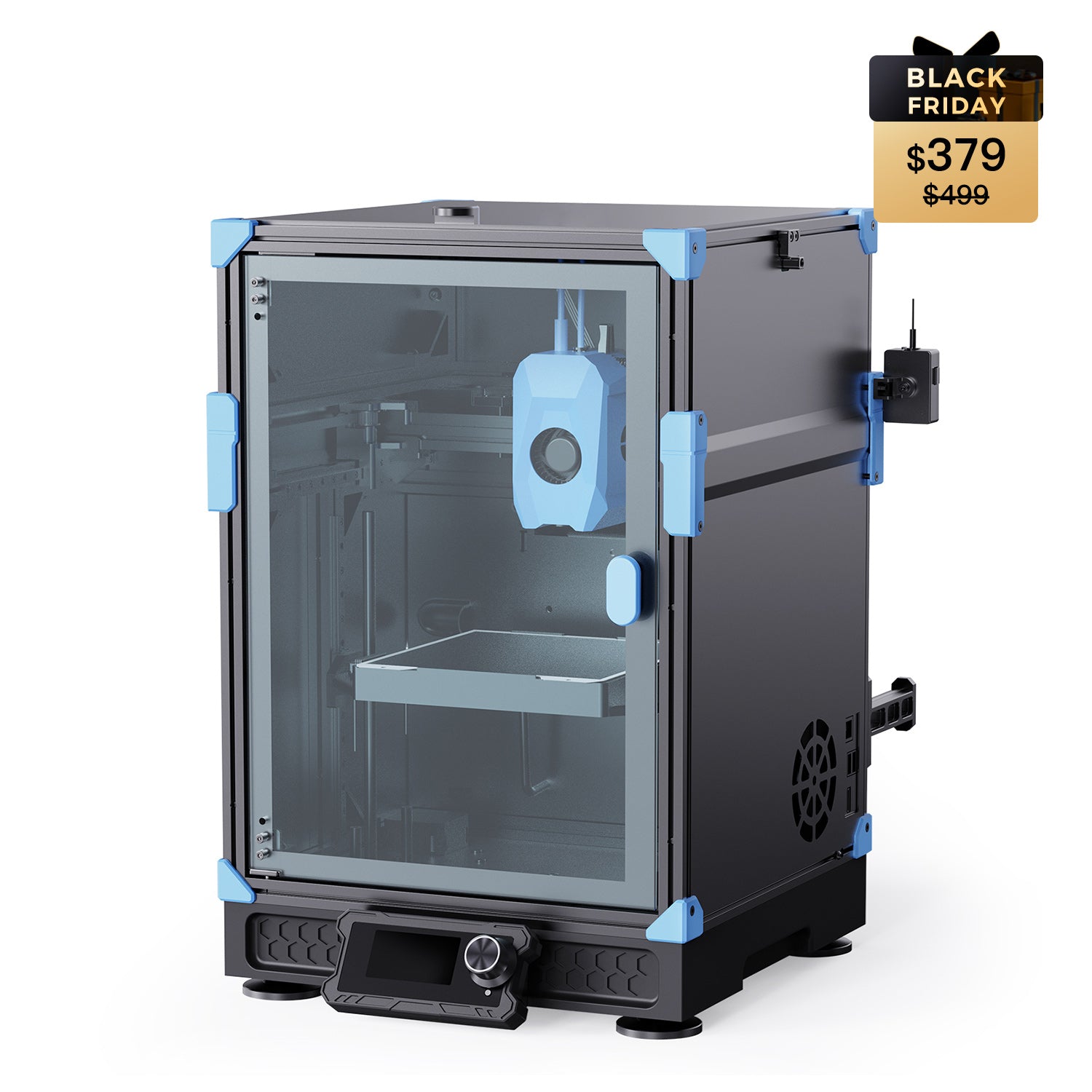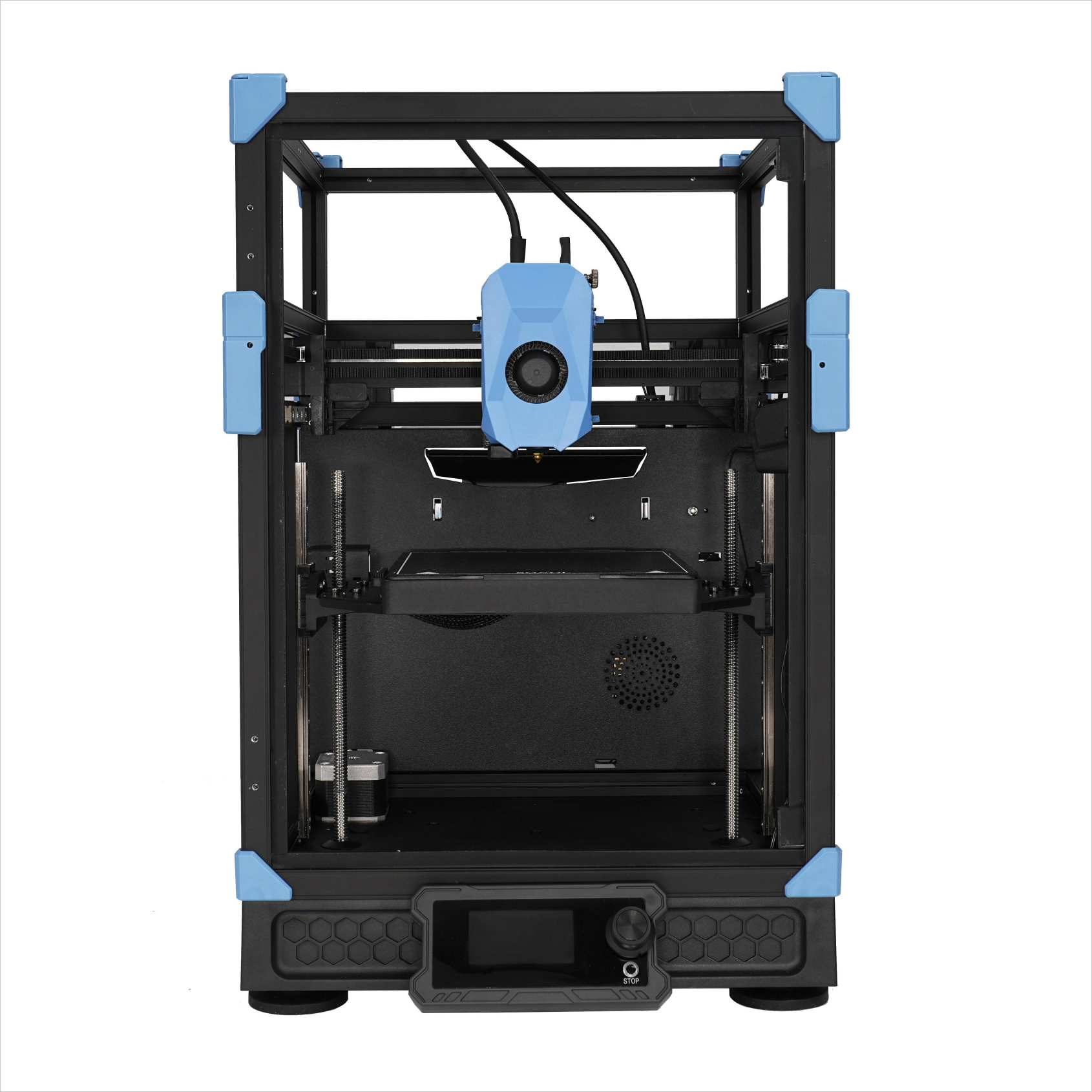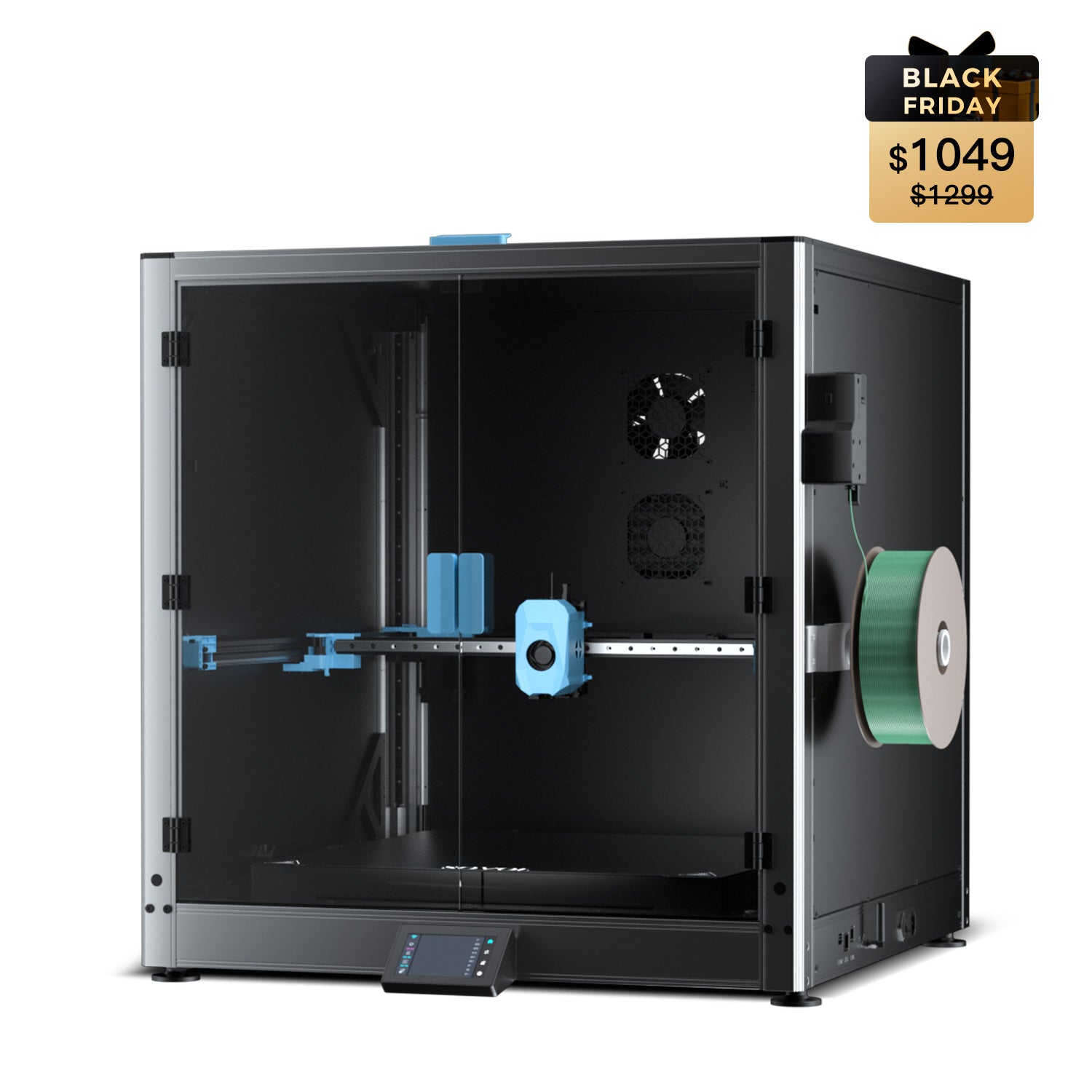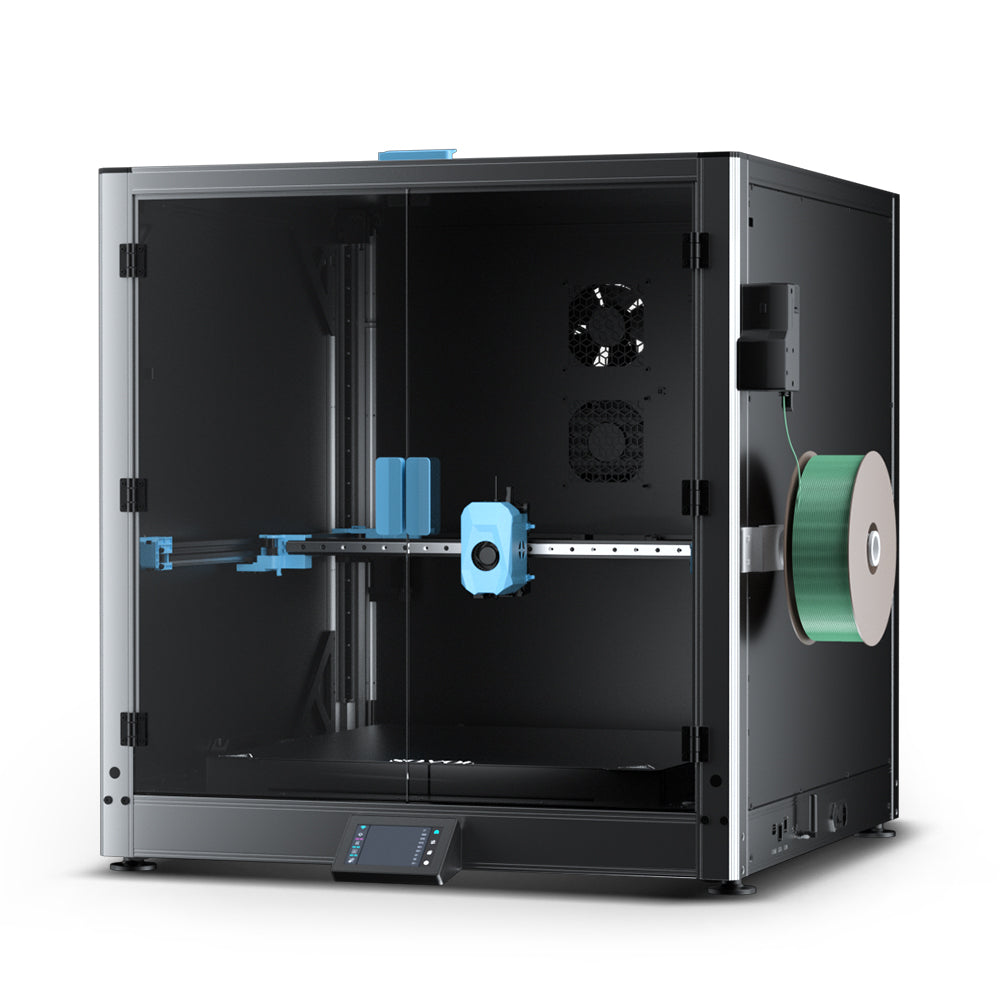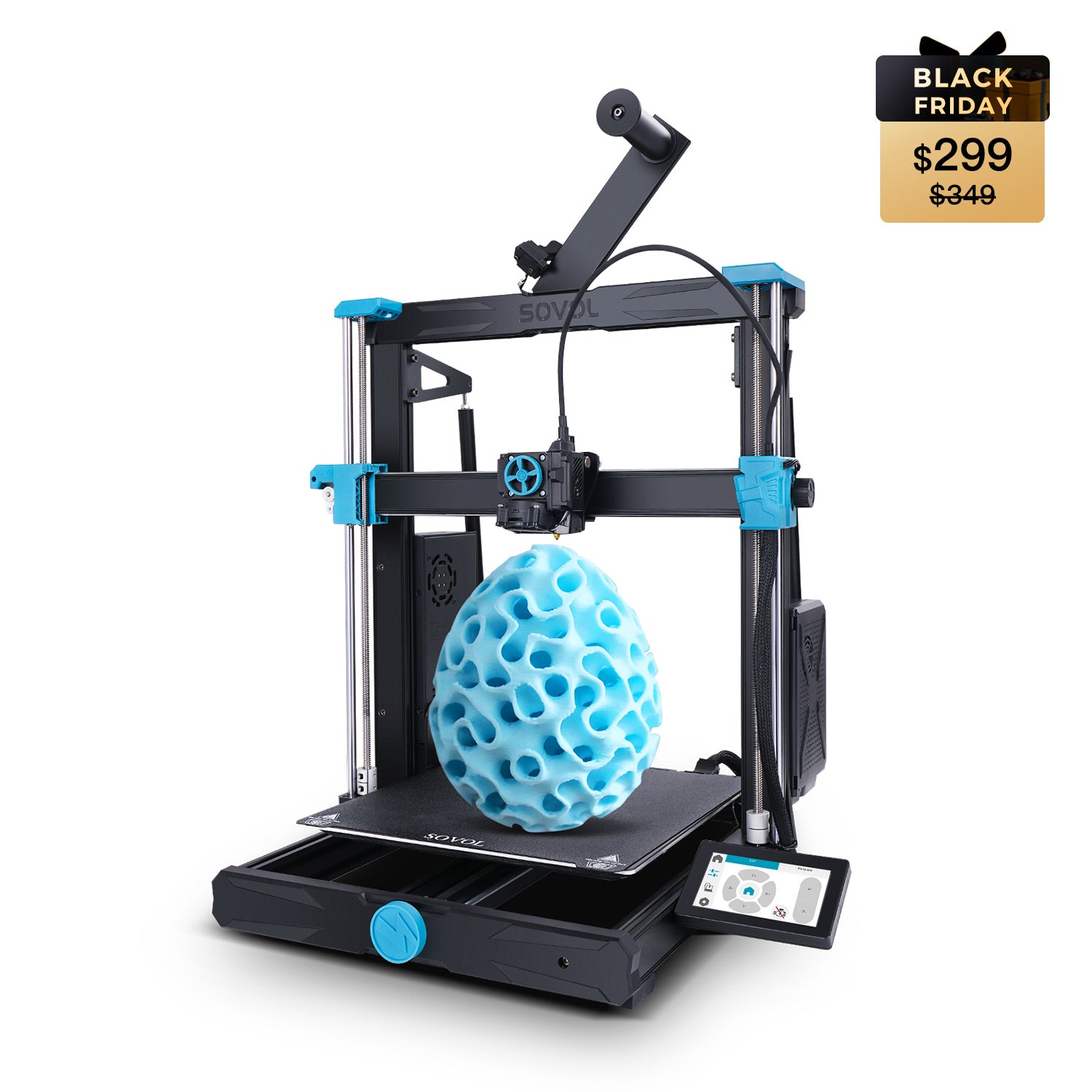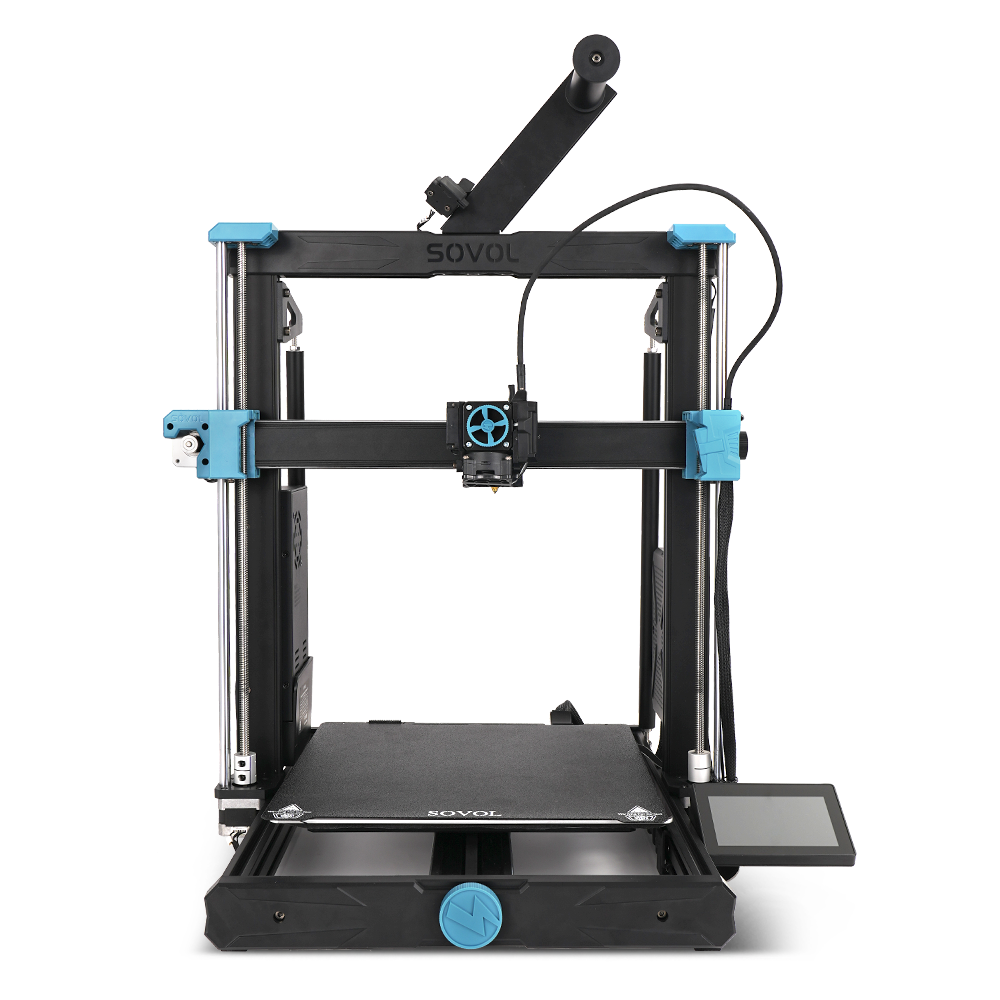The world of 3D printing is changing fast, and the introduction of high speed 3D printers is making a significant impact. Speed is now super important, especially for those who enjoy creative projects or face tight deadlines; fast printing helps a lot. It saves you hours of work.
The good news is you don’t need to spend a ton. Now, there are great high speed 3D printers available for under $1000 that are quick and reliable. Some top models include the Sovol SV08 MAX, Bambu Lab P1S, and Anycubic Kobra 2. These high speed 3D printers are not only fast but also produce high-quality prints, making them ideal for budget-conscious users.
With faster printing capabilities, your ideas can come to life quickly. Why wait days for a project when you can finish it in hours with a high speed 3D printer?
Key Takeaways
- Fast 3D printers under $1000 save time and boost creativity. Check out models like Sovol SV08 MAX and Bambu Lab P1S for quick printing.
- Pick a printer with good speed and strong build quality. A sturdy frame stops shaking and makes prints clean and accurate.
- Easy-to-use printers are important. Choose ones with simple software and touchscreens. These features help beginners focus on making things, not fixing problems.
- Think about the materials you want to print with. Many fast printers work with different filaments, so you can try new projects.
- Start with easy projects to learn how to use your printer. As you get better, try harder designs to use all its features.
Key Features to Look for in a High Speed 3D Printer
Speed Metrics and Performance
When picking a fast 3D printer, check its speed first. Faster printers save time for both simple and detailed projects. Most home printers work at 50–100 mm/s, but faster ones like the Sovol SV08 MAX can reach 700 mm/s. Bigger machines, like Raise3D’s Pro3 HS Series, print at 500 mm/s with 15,000 mm/s² acceleration. These speeds are great for people needing quick results.
Speed isn’t just about how fast it prints. It’s also about keeping quality high. A good printer stays fast while making clean, sharp prints. Look for printers with smart software like Klipper that balance speed and accuracy.
Build Quality and Durability
Fast 3D printers need to be strong. High speeds can cause shaking, which might ruin your prints. That’s why strong frames, like aluminum or steel ones, are important.
Tests show that materials and settings affect strength. For example, PLA, PETG, and ABS prints depend on nozzle heat and how they’re built. Printers with smart designs, like CoreXY setups, handle stress better and last longer.
Ease of Use and Software Compatibility
You shouldn’t struggle to use your printer. Easy controls and good software make printing simpler. Many fast printers have touchscreens and work with popular programs like Cura or PrusaSlicer.
Connections like Wi-Fi, Ethernet, and USB make printing easier. Some printers even have special features like FAST™ tech to speed things up. Whether you’re new or experienced, easy-to-use printers let you focus on creating instead of fixing problems.
Detailed Reviews of Top High Speed 3D Printers Under $1000
Sovol SV08 MAX
The Sovol SV08 MAX is a top choice for speed. Its CoreXY structure keeps it steady, even at 700 mm/s. This design reduces shaking, so prints stay neat and fast.
Key Features:
- Print Speed and Acceleration: It reaches 700 mm/s and accelerates quickly. This makes it great for big projects or fast prototypes.
- Build Volume: The large 500×500×500 mm space lets you print big models easily.
- Firmware and Usability: With Klipper firmware, it has tools like input shaping. These features help improve print quality.
- Material Compatibility: It works well with PLA, ABS, PETG, and TPU materials.
Pros and Cons:
Pros:
- Very fast and stable.
- Big build area for larger projects.
- Advanced firmware for better control.
Cons:
- Harder for beginners to learn.
- Needs a strong table because of its size.
Bambu Lab P1S
The Bambu Lab P1S is fast and affordable. It’s a great pick for users who want both speed and good results.
Key Features:
- Print Speed and Acceleration: It prints up to 500 mm/s smoothly. Its motion system keeps it steady during quick moves.
- Build Volume: The 256×256×256 mm space is good for medium projects.
- Firmware and Usability: It uses Bambu Studio software, which is easy to use. It also works with slicers like Cura.
- Material Compatibility: It supports PLA, PETG, and carbon fiber filaments.
Pros and Cons:
Pros:
- High-quality prints at fast speeds.
- Simple software for beginners.
- Small size fits tight spaces.
Cons:
- Smaller build area than Sovol SV08 MAX.
- Only supports single extrusion.
Anycubic Kobra 2
The Anycubic Kobra 2 is budget-friendly but still fast. It’s perfect for beginners or hobbyists wanting to try high-speed printing.
Key Features:
- Print Speed and Acceleration: It prints at 250 mm/s, faster than most beginner printers.
- Build Volume: The 220×220×250 mm space is good for small to medium projects.
- Firmware and Usability: It has simple firmware and a touchscreen for easy use.
- Material Compatibility: It works with PLA, ABS, and TPU materials.
Pros and Cons:
Pros:
- Low price.
- Easy to set up and operate.
- Lightweight and compact design.
Cons:
- Slower than premium models like Sovol SV08 MAX.
- Fewer material options for advanced projects.
Performance Comparison
Here’s a quick look at how these printers perform with Benchy build times:
|
Product |
Benchy Build Time (minutes) |
|---|---|
|
FlashForge Adventurer 5M |
26.80 |
|
Bambu Lab P1P |
45.30 |
|
Prusa MK4 |
45.30 |
|
Anycubic Kobra 2 |
47.60 |
|
Creality Ender 3 |
112.30 |
As shown, the Sovol SV08 MAX and Bambu Lab P1S are the fastest. They are great for users who need quick results.
FLASHFORGE Adventurer 5M
The FLASHFORGE Adventurer 5M is a great pick for beginners. It’s easy to use and offers good speed and print quality. This printer is affordable and works well for hobby projects.
Key Features:
- Print Speed and Acceleration: It prints up to 300 mm/s, which is decent. While not the fastest, it’s quick enough for most tasks. Its smooth acceleration keeps prints neat even at higher speeds.
- Build Volume: The 220×220×250 mm size is good for small projects. It’s compact, so it fits on desks but still has enough space for creative ideas.
- Firmware and Usability: It has a simple touchscreen that’s easy to use. The firmware is beginner-friendly and works with Cura and Simplify3D software.
- Material Compatibility: It supports PLA, ABS, and PETG filaments. The nozzle is detachable, making it easy to switch materials.
Pros and Cons:
Pros:
- Budget-friendly and simple for beginners.
- Small size fits tight spaces.
- Easy controls and software options.
Cons:
- Slower than faster models like Sovol SV08 MAX.
- Build area is too small for big projects.
If you’re starting out or need a reliable printer, this is a good choice. It’s one of the best in its price range for speed and quality.
Prusa MK4 Kit
The Prusa MK4 Kit is loved by hobbyists for its strong build and flexibility. It’s a DIY kit, so you’ll need to put it together. Once built, it performs really well.
Key Features:
- Print Speed and Acceleration: It prints at 200 mm/s, which isn’t the fastest. However, it makes up for it with precise and steady prints. Its acceleration settings ensure smooth results.
- Build Volume: The 250×210×210 mm size is good for most projects. It’s smaller than some printers but still versatile for many uses.
- Firmware and Usability: It uses Prusa’s custom firmware, which is stable and easy to use. It also works with PrusaSlicer, a popular slicing program.
- Material Compatibility: It handles many materials like PLA, ABS, PETG, TPU, and even polycarbonate.
Pros and Cons:
Pros:
- Strong and durable design.
- Works with many types of materials.
- Can be upgraded and customized.
Cons:
- Slower than other faster printers.
- Needs assembly, which might not suit everyone.
The Prusa MK4 Kit is perfect for people who like building and upgrading. Its quality and flexibility make it great for both hobbyists and professionals.
Sovol SV08 MAX: Fast and Reliable for All Users
The Sovol SV08 MAX is one of the best 3D printers in 2025. It’s super fast, strong, and packed with cool features. Whether you’re a beginner or a pro, this printer gives great results without costing too much. Let’s see why it’s so popular.
CoreXY Design and Speed (700mm/s)
The Sovol SV08 MAX uses a CoreXY design to print faster. This setup uses belts to move parts, making it lighter and smoother. It reduces shaking, so prints stay neat even at high speeds. You’ll get clean and detailed prints, even when printing fast.
It can print up to 700 mm/s and accelerates at 40,000 mm/s². That’s 120% faster than older models like the MK4S. It’s perfect for people who need quick prints without losing quality. During tests, it stayed accurate with only a tiny error of ≤0.02 mm.
Pro Tip: For big projects or tight schedules, the CoreXY design gives both speed and accuracy. It saves time and effort.
Large Build Space (500×500×500mm)
The Sovol SV08 MAX has a huge build space of 500×500×500 mm. You can print big models or many small ones at once. This is great for professionals making prototypes or hobbyists working on big ideas.
The large space works well with its speed. You don’t have to choose between size and detail. Plus, the Eddy Current Scanning system levels the bed in just 80 seconds. This helps the first layer stick well, which is key for good prints.
|
Feature |
Specification |
|---|---|
|
Printing Volume |
500×500×500 mm |
|
Maximum Print Speed |
700 mm/s |
|
Acceleration |
40,000 mm/s² |
|
Adaptive Area Detection |
Yes |
|
Pressure Advance |
Yes |
Klipper Firmware and Easy Use
The Sovol SV08 MAX uses Klipper firmware, which is fast and simple to use. Klipper makes the printer work better by doing hard calculations on another processor. This helps the printer go faster without losing quality.
People who switch to Klipper often see shorter print times. It also has features like input shaping and pressure advance to make prints look better. These tools reduce problems like ringing and improve details.
Klipper works with slicers like Cura and PrusaSlicer, making it easy to set up. Whether you’re new or experienced, you can quickly adjust settings to fit your needs.
Why Klipper is Great: Old firmware like Marlin can’t handle high speeds well. Klipper not only keeps up but also makes printing easier and better.
Material Compatibility
The Sovol SV08 MAX works with many filament types. You can use PLA, ABS, PETG, TPU, and even advanced materials like carbon fiber blends. This makes it great for all kinds of projects, from strong prototypes to detailed decorations.
Its nozzle heats up to 300°C, which helps with tough materials like ABS and PETG. The heated bed keeps prints stuck in place, stopping them from bending or warping. If you like trying new things, this printer handles unique filaments well.
Pro Tip: Use PLA for simple and fast prints. For stronger or heat-resistant items, go with PETG or ABS. TPU is perfect for flexible items like phone cases or seals.
The printer also has a filament sensor. It notices when the filament is low and pauses the print. This saves material and time, especially during long prints that use a lot of filament.
Pros and Cons
Every printer has good and bad points. Here’s what to know about the Sovol SV08 MAX.
Pros
- Super fast: Prints at 700 mm/s, finishing projects quickly.
- Big build space: The 500×500×500 mm area fits large or multiple designs.
- Smart firmware: Klipper firmware improves quality and is easy to adjust. Features like input shaping make prints smooth and accurate.
- Works with many materials: Handles basic PLA and advanced filaments like composites.
Cons
- Takes time to learn: Klipper firmware might confuse beginners at first.
- Large size: Its big frame needs plenty of room to set up.
- Not ideal for starters: It’s affordable for its features but might be too much for beginners.
Note: Beginners might prefer simpler printers like the Anycubic Kobra 2. But if you want speed and flexibility, the Sovol SV08 MAX is a great choice.
Comparison Table of Recommended High Speed 3D Printers
Print Speed and Acceleration
Not all 3D printers are equally fast. Lighter print heads move quicker than heavier ones. For example, light heads (<200 g) can print bridges at 100 mm/s and infill at 80 mm/s. Heavy heads (>200 g) are slower, printing bridges at 60 mm/s and infill at 50 mm/s.
Here’s a simple speed comparison:
|
Parameter |
Light Head (<200 g) |
Heavy Head (>200 g) |
|---|---|---|
|
Perimeters |
60 mm/s |
35 mm/s |
|
External perimeters |
40 mm/s |
25 mm/s |
|
Infill |
80 mm/s |
50 mm/s |
|
Solid infill |
80 mm/s |
50 mm/s |
|
First layer |
20 mm/s |
15 mm/s |
|
Last layer |
40 mm/s |
25 mm/s |
|
Support material |
50 mm/s |
30 mm/s |
|
Bridges |
100 mm/s |
60 mm/s |
If you want faster printing, pick models with light heads like the Sovol SV08 MAX or Bambu Lab P1S. These printers are made for quick movements while keeping prints neat.
Build Volume
Build volume decides how big your printed objects can be. Large spaces, like the Sovol SV08 MAX’s 500×500×500 mm, are great for big projects or printing many items at once. Smaller printers, like the Bambu Lab P1S (256×256×256 mm) or Anycubic Kobra 2 (220×220×250 mm), work well for small designs or tight areas.
Here’s a build volume comparison:
|
Printer Model |
Build Volume (mm) |
Best For |
|---|---|---|
|
Sovol SV08 MAX |
500×500×500 |
Large prototypes |
|
Bambu Lab P1S |
256×256×256 |
Medium projects |
|
Anycubic Kobra 2 |
220×220×250 |
Small designs |
|
FLASHFORGE Adventurer 5M |
220×220×250 |
Hobby projects |
|
Prusa MK4 Kit |
250×210×210 |
Versatile tasks |
For big designs, the Sovol SV08 MAX is the best choice. Beginners or hobbyists might prefer smaller models like the Anycubic Kobra 2.
Firmware and Usability
Firmware affects how easy a printer is to use. Klipper firmware, used in the Sovol SV08 MAX, is great for advanced users. It offers features like input shaping and pressure advance to improve print quality and reduce mistakes.
Beginners will like the Bambu Lab P1S, which has simple software. Bambu Studio supports multi-color printing and works with slicers like Cura. The Creality K1 Max, however, has tricky AI features and filament paths, making it harder to use.
Tip: New users should pick easy software like the Bambu Lab P1S. Experienced users will enjoy Klipper firmware on the Sovol SV08 MAX.
Material Compatibility
When picking a 3D printer, choose one that works with many materials. This lets you try different projects and get the results you want. Most fast printers under $1000 can use PLA, ABS, and PETG. These are common materials that are strong and good for daily use.
For harder projects, find printers that work with TPU or carbon fiber blends. The Sovol SV08 MAX and Bambu Lab P1S are great examples. They can handle tough materials like carbon fiber filaments. This makes them ideal for making strong and lightweight items.
Temperature control is also important. A printer with a hot nozzle and heated bed, like the Sovol SV08 MAX, can print materials like ABS or PETG. These features help your prints stick well and avoid bending.
Pro Tip: Start with PLA if you’re new to printing. It’s simple to use and gives great results. Once you’re ready, try other materials to improve your skills.
Price and Value
Getting a good balance between cost and quality is important. You don’t need to spend too much, but you want a printer that works well. In 2025, there are many great options under $1000.
The Anycubic Kobra 2 is a budget-friendly choice. It’s great for beginners who want good speed and quality without spending a lot. If you want more features, the Sovol SV08 MAX is worth it. It’s faster, has a big build space, and uses advanced Klipper firmware. While it costs more, it’s perfect for serious users.
Think about what matters most to you. If speed and quality are key, spending more on something like the Bambu Lab P1S might be smart. But if you’re new or working on small projects, a cheaper option like the FLASHFORGE Adventurer 5M could be better.
Remember: A higher price doesn’t always mean better quality. Pick a printer with the features you need for the best value.
Buying Guide for High Speed 3D Printers
Things to Think About Before Buying
Picking the right high-speed 3D printer can seem tricky. Focus on a few important things to make it easier. First, think about your budget. Many fast printers under $1000 are affordable and work well. Make sure the price fits what you can spend. If you’re looking at cheaper FDM printers, compare their features to find the best one.
Next, think about why you need the printer. Is it for fun, school, or work? For learning, choose a printer that helps you improve skills. For example, a heated bed is great for ABS material because it keeps prints smooth. Also, check the nozzle size. Small nozzles make detailed prints but are slower. Bigger nozzles print faster but with less detail.
Decide if you want a ready-to-use printer, a kit, or a custom-built one. Ready-to-use printers are easy and come with software and warranties, which is good for beginners. Kits need assembly and are fun for people who like building things. Custom-built printers are best for advanced users who want full control.
Advice for New Buyers
If you’re new to 3D printing, start with something simple. Pick a printer that’s easy to set up and use. Fully-assembled printers like the FLASHFORGE Adventurer 5M are perfect for beginners. They don’t need assembly, so you can start printing right away.
Check the software too. A printer that works with slicers like Cura or PrusaSlicer is easier to use. Look for features like touchscreens and Wi-Fi. These make printing more convenient, especially for beginners.
Try different materials to learn more. PLA is the easiest to use, but testing PETG or TPU can show you what your printer can do. Also, read reviews and watch videos. Learning from others can help you avoid mistakes and save time.
Pro Tip: Begin with small projects to practice using your printer. Once you’re comfortable, try more advanced designs.
Picking the best high-speed 3D printer under $1000 depends on your goals. If you need speed and a big build area, the Sovol SV08 MAX is a great choice. Beginners might like the FLASHFORGE Adventurer 5M because it’s easy to use and prints well. If you’re on a budget, the Anycubic Kobra 2 offers good value for its price. For experts, the Prusa MK4 Kit provides high-quality prints and lots of flexibility.
Look at features like speed, size, and materials it can use. Think about how much room you have and the projects you want to make. With so many affordable printers, you’ll find one that fits your needs and budget.
Tip: Start with easy projects to learn how your printer works. Once you’re ready, try more detailed designs.
FAQ
What makes a fast 3D printer worth buying?
A fast 3D printer saves time and keeps prints looking great. It’s a smart buy if you need quick results for projects. Many under $1000 are affordable and work well for hobbyists and professionals.
Can beginners use fast 3D printers?
Yes, some fast 3D printers are easy for beginners. The FLASHFORGE Adventurer 5M is simple to set up and use. It’s fast and makes good prints, helping you learn without too much trouble.
How do I pick the right 3D printer?
Think about your budget, project size, and materials. For big projects, try the Sovol SV08 MAX. For smaller ones, the Anycubic Kobra 2 is a good choice and costs less.
Do faster printers make bad prints?
No, good software like Klipper keeps prints neat and clean. Features like input shaping fix mistakes, so fast printers can still make detailed designs.
Are fast 3D printers strong?
Yes, most fast printers are made with tough frames like aluminum. The Sovol SV08 MAX uses a CoreXY design to stay steady and last a long time.

